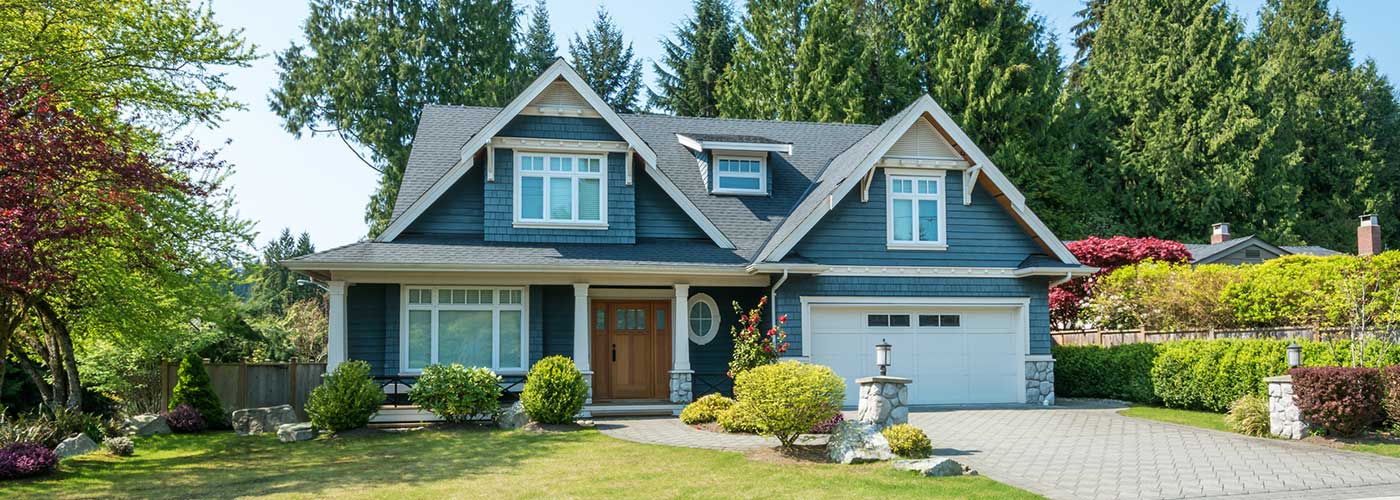Painting the exterior of your home is a good idea if you want to improve your curb appeal and give your home a general makeover. However, if you don’t do a good job of painting the exterior of your home, you and everyone else who visits your home will be confronted with a painting nightmare.
DIY projects are a great way to save money as a homeowner – but only if you get it right. Sloppy paintwork is not very appealing and exterior painting mistakes are incredibly common. Unless you are qualified as a painter, making costly mistakes is all but inevitable.
You may not see the effects of your mistakes until the project is complete, so it makes sense to safeguard against mistakes before you begin painting. At the Arizona Painting Company, we have some top tips to help you avoid common exterior painting mistakes.
Exterior Painting 101
First of all, painting is far more complicated than you may think. You need to understand the products you are using and the types of surfaces you are working with. If you use the wrong paint for a surface, fail to use the paint as instructed, or do not properly prepare the surface, the resulting paintwork won’t last and may negatively impact the curb appeal of your home.
An exterior painting project is expensive, so every mistake has the potential to cause financial hardship that could have been avoided. In many cases, correcting exterior painting mistakes costs more than it would have cost to bring in a professional painter. If you are not confident enough to complete an exterior painting project without making mistakes, you should consider hiring a professional to do the job.
Surface Preparation
There is no denying it – preparing surfaces is an arduous job. It is tempting to settle for “It’s good enough,” when it comes to preparing surfaces. However, if you do not ensure that surfaces are thoroughly clean, sanded, and free of defects, the resulting paintwork will reflect your sloppy surface preparation. If a surface is not properly prepared, the paint may not adhere to the surface.
Rather than being a minor inconvenience, prepping your surfaces is an essential part of a painting project. It is the foundation that ensures your paintwork will last and produce the results that you want – provided that you also use the right paint, safety equipment, and methods.
Paint Quality
It doesn’t pay off to skimp on the cost of paint. While there are good paints available at lower costs, unless you are a professional painter, you will be hard-pressed to choose a paint that is of high enough quality. Cheap paint is typically not fit to last, which means you can look forward to touching up your paintwork within a few months.
Lower quality paint may not take to a surface, can dry out dusty, or form bubbles, depending on the make-up of the paint. If you use an unpredictable paint, there is no way of knowing how it will adhere to your surfaces. The risk simply is not worth the savings in cost when you consider that you may need to start over from scratch.
Painting Wood
If you are painting over new or bare wood, a primer is essential. A primer protects the wood and helps the paint adhere to the surface. It doesn’t take much to apply a coat of primer, so protect your wood with primer and create the foundation for a perfect exterior painting project. Avoid trying to save compromised wood with paint. If paint is rotting or suffering from severe moisture retention, it is better to replace the wood than try to paint over the damage.
In general, it is important to monitor the weather to ensure that your paintwork endures. This is particularly difficult in the Arizona sun. Most paints are designed to endure colder temperatures, but the extremes in heat will cause the majority of paints to dehydrate too quickly. Make sure to plan your exterior painting projects so that your paint is not applied or drying in direct sunlight.
Painting Safety
Safety is a major concern for professional painters. DIY painters, on the other hand, often forego the need for safety and put themselves in imminent danger. Depending on the extent of the project, you may need a sturdy ladder, face mask, goggles or gloves. While most safety precautions are needed for worst-case scenarios, a secure ladder is essential.
Ladder safety is something that every DIYer should take seriously. The base of the ladder should always be secure. When you are on a ladder, never over-reach or stand on the top rung of the ladder. Where possible, have someone else close by to stabilize the ladder. They need to be ready to react should the worst happen.
For more exterior painting tips, call the Arizona Painting Company. Our team is here to help you ensure that your exterior painting projects are successful and safe.

